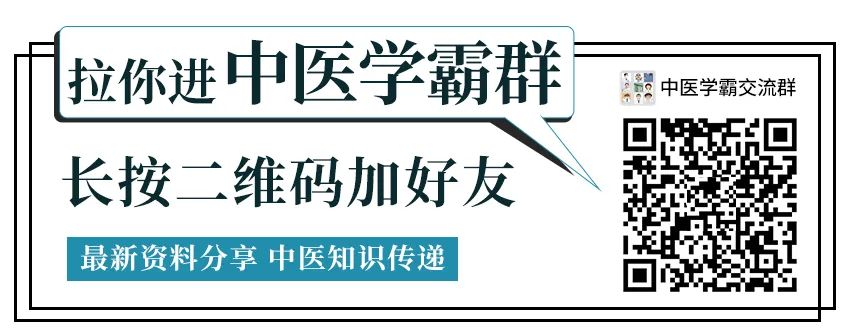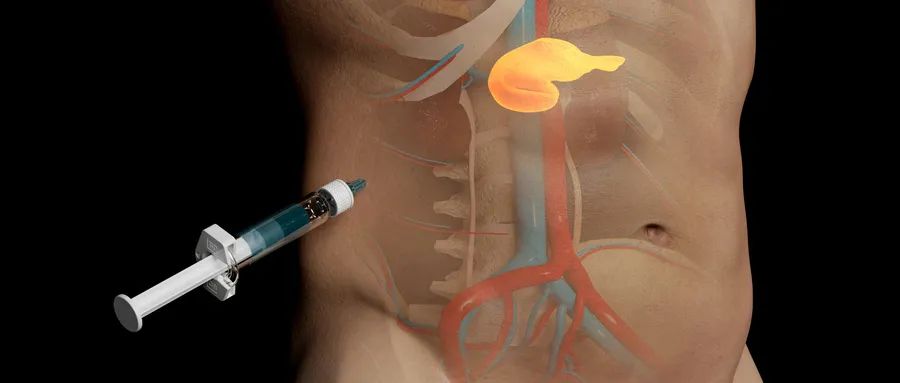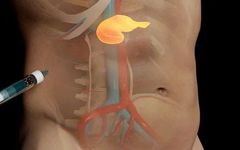


Dietary therapy is quite important in the treatment of diabetes.
Diabetes is an endocrine metabolic disease characterized by disorder of sugar metabolism, with an unclear etiology. Its main features include high blood sugar and the presence of sugar in urine,clinically presenting as polyuria, polydipsia, polyphagia, fatigue, and weight loss, collectively referred to as the “three polys and one less”. Although traditional Chinese medicine (TCM) does not have a specific term for diabetes, based on its clinical manifestations, it falls under the category of “Xiao Ke” (消渴) syndrome in TCM.
TCM believes that Yin deficiency and heat dryness, as well as long-term damage to kidney Yang, are the main pathogenic mechanisms of diabetes. Therefore, dietary therapy is often formulated under the principles ofclearing heat, nourishing Yin, benefiting Qi, generating fluids, and tonifying the liver and kidneys. Below are commonly used dietary therapies for this condition for your reference:

1. Clam and Bitter Melon Soup
Ingredients:Bitter melon 250g, clam meat 100g. Soak live clams in clean water for two days to remove the muddy taste, then take out the meat. Boil together to make soup, season with oil and salt, and consume the soup along with the bitter melon and clam meat.
Note:Bitter melon is sweet, bitter, cold, and enters the stomach and intestines, having effects of clearing heat and detoxifying, alleviating thirst, and reducing irritability. It contains proteins, sugars, calcium, phosphorus, and small amounts of vitamins.
Animal experiments have shown that bitter melon has a blood sugar-lowering effect.
According to reports from the Institute of Zoology of the Chinese Academy of Sciences and the 197 Hospital, using dried and powdered bitter melon to treat 29 diabetic patients achieved an effective rate of 79.31%. Statistical analysis showed significant differences in blood sugar levels 2.5 hours after meals and 24-hour urine sugar quantification before and after treatment, consistent with the significant blood sugar-lowering effects of crude extracts of bitter melon on experimental diabetic mice, suggesting that bitter melon extracts have insulin-like effects.
Clam meat is sweet, salty, and cold, entering the heart, lung, and bladder meridians, with effects of clearing heat, nourishing Yin, alleviating thirst, and promoting urination. The “Bencao Shiyi” states it has the efficacy of “brightening the eyes, removing dampness, and alleviating thirst”.
Clam meat is also mentioned in references such as “Common Disease Prescription Research Reference Materials” as a treatment for diabetes.
This formula combines two ingredients to clear heat and nourish Yin, suitable for diabetes with a tendency towards stomach heat and Yin deficiency, but not recommended for those with spleen and stomach deficiency-cold or diarrhea. The “Sui Xi Ju Dietary Manual” also advises against bitter melon for those with cold in the middle to avoid damaging stomach Qi.
2. Corn Silk Soup with Lean Pork
Ingredients:Corn silk 30g, lean pork 100g. Boil together to make soup, strain out the residue, and consume the soup and meat.
Note:The “Lingnan Herbal Record” once recorded that corn silk and pork soup is used to treat diabetes. Corn silk is sweet, bland, and neutral, commonly used as a diuretic, with effects of promoting urination, reducing swelling, stopping bleeding, and lowering blood pressure. Clinically, it is often used to treat edema, urinary disorders, thirst, and hypertension. The “Common Disease Prescription Research Reference Materials” compiled by the TCM Research Institute also introduced using corn silk alone to brew water as tea for treating diabetes.
Lean pork nourishes the internal organs and is rich in protein, making it suitable for diabetic patients. This formula is suitable for general diabetic patients, but not recommended for those with kidney Yang deficiency.
3. Huai Yam and Job’s Tears Porridge
Ingredients:Huai yam 60g, Job’s tears 30g. Cook together to make porridge.
Note:Huai yam, also known as Dioscorea, is sweet and neutral, moist and rich in liquid, entering the spleen, lung, and kidney meridians. The “Shennong Bencao Jing” states that “Dioscorea is sweet and warm, it treats injuries, nourishes deficiency, removes cold and heat evil, tonifies the middle, benefits Qi, and promotes muscle growth”.
This ingredient is neither cold nor dry, and has the effects of tonifying the spleen and stomach, nourishing the lungs, and benefiting the kidneys. Clinically, it is often used to treat spleen and stomach deficiency, diarrhea, and thirst.
Modern pharmacological studies show that it contains mucoproteins, amylases, etc. The mucoproteins are hydrolyzed in the body into nourishing proteins and carbohydrates; the amylases hydrolyze starch into glucose, which has certain efficacy for diabetes (“Traditional Chinese Medicine Formulas and Medications”).
Job’s tears are sweet, bland, and slightly cold, entering the spleen, kidney, and lung meridians, with effects of promoting urination, dispelling wind-dampness, clearing heat, draining pus, strengthening the spleen, and stopping diarrhea.
The “Bencao Gangmu” records that Job’s tears can treat thirst and diabetes when cooked as porridge. The “Bencao Shiyi” states that Job’s tears have “the effect of treating thirst”.
Job’s tears are high in protein and low in sugar, and when cooked with Huai yam, they provide therapeutic effects for diabetes while also reducing meal portions, making them suitable for various types of diabetic patients, especially those with spleen and stomach deficiency and excessive thirst.
4. Astragalus and Huai Yam Decoction

Ingredients:Astragalus 30g, Huai yam 30g, decoct in water to replace tea.
Note:Astragalus, also known as Huang Qi, is sweet and slightly warm, entering the spleen and lung meridians. Li Shizhen stated: “Qi means longevity, Huang Qi is yellow, and is the best among tonics, hence the name”.
This ingredient has effects of tonifying the spleen, benefiting Qi, stabilizing the exterior, stopping sweating, promoting urination, and reducing swelling. It contains choline, sweet tea alkaloids, amino acids, glucuronic acid, and trace folic acid. Clinically, it is often used to treat various Qi deficiency syndromes, palpitations, dizziness, and thirst.
Reports indicate that administering Astragalus decoction and alcohol extract to rabbits has a blood sugar-lowering effect, and Astragalus also has a blood sugar-lowering effect in the body, thus it is commonly used to treat diabetes.
Beijing TCM practitioner Zhu Chenyu believes that “Astragalus combined with Huai yam lowers urine sugar, as Astragalus tonifies the middle, benefits Qi, and raises Yang, while Huai yam nourishes Qi and Yin, stabilizes kidney essence. The two herbs work together synergistically to benefit Qi, generate fluids, strengthen the spleen, tonify the kidneys, and prevent the leakage of refined essence, turning urine sugar negative”.
Some also point out that using raw Astragalus 15g to 30g decocted as tea has certain efficacy in alleviating symptoms and lowering blood sugar and urine sugar in some diabetic patients.
This formula is widely applicable for diabetes with a tendency towards spleen and stomach deficiency and lung Qi insufficiency, but not suitable for those with lung and stomach heat or concurrent external pathogens.

5. Goji Berries Stewed with Rabbit Meat
Ingredients:Goji berries 15g, rabbit meat 250g, add appropriate amount of water, stew over low heat until cooked, season with salt, and consume the soup and rabbit meat.
Note:Goji berries are a good tonic in herbal medicine, sweet and neutral, entering the liver and kidney meridians, with effects of nourishing the liver and kidneys, benefiting essence, and brightening the eyes. Li Shizhen stated it can “nourish the kidneys and moisten the lungs”; some literature mentions it can “nourish Yin” and “invigorate Yang”. It contains proteins, fats, sugars, vitamins, iron, calcium, and phosphorus.
Clinically, it is often used to treat kidney essence deficiency, liver and lung Yin deficiency, and has high medicinal value. A poet from the Tang Dynasty praised Goji berries as “a superior tonic with a sweet dew flavor, knowing that a spoon can prolong life”, believing its properties can promote longevity.
Pharmacological studies show that it has a blood sugar-lowering effect, thus it is also commonly used to treat diabetes.
Goji berries are produced in Gansu, Tianjin, and other regions, with those from Ningxia being the best, characterized by bright red color, rich sweetness, moist texture, and uniform size.
Rabbit meat is spicy, neutral, and non-toxic, entering the spleen and stomach meridians, with effects of tonifying the middle, benefiting Qi, alleviating thirst, and nourishing Yin.
The “Bencao Gangmu” states that rabbit bones “treat thirst”. The “Zengbu Bencao Beiyao” states that “rabbit meat treats thirst”.
When stewed with Goji berries,it nourishes the liver and kidneys, strengthens the spleen, and alleviates thirst, suitable for diabetes with a tendency towards liver and kidney deficiency. However, it is not suitable for those with spleen and stomach heat. Some literature points out that long-term consumption of rabbit meat “damages vital energy and weakens Yang”, so it is best used in combination with other tonifying herbs.
6. Ginseng Stewed for Consumption
Ingredients:Red ginseng 12g, add 100ml of boiling water, place in a ginseng cup, and stew in water for two hours, consume warm.
Note:Ginseng is a well-known precious herb, sweet, bitter, and slightly warm, entering the spleen and lung meridians, containing ginsenosides, fatty acids, volatile oils, phytosterols, vitamins, and sugars.
The “Shennong Bencao Jing” records that ginseng has effects of “tonifying the five organs, calming the spirit, stabilizing the soul, stopping palpitations, eliminating evil Qi, brightening the eyes, and enhancing intelligence, prolonged use lightens the body and prolongs life”.
Soviet scholar Vasilkov praised ginseng as the world-renowned “lifeline”, indicating its strong tonifying and beneficial effects are widely recognized.
Reports from abroad indicate that ginseng has an inhibitory effect on high blood sugar due to “aldosterone” and dietary-induced high blood sugar.
In 1954, a conference was held in Leningrad to report on the pharmacological effects and therapeutic uses of ginseng, noting its blood sugar-lowering effects. Chinese scholar Liu Jianxun’s experimental results also indicated that ginseng has a blood sugar-lowering effect (“Scientific Annotation of the Essentials of Herbal Medicine”).
In 1977, the 24(2) issue of “Han Fang no Rinsho” (in Japanese) reported that using Ba Wei Wan with ginseng for diabetes showed significant effects. Therefore, ginseng is also commonly used in TCM clinical practice for treating diabetes.
Clinically, some people slice ginseng and suck on it before bed or during the day to reduce thirst and increase stamina.
If ginseng is stewed, its effects of greatly tonifying vital energy, generating fluids, alleviating thirst, and enhancing intelligence are even stronger,this formula is suitable for diabetes with a tendency towards both Qi and Yin deficiency, particularly for those with shortness of breath, thirst, fatigue, pale complexion, or concurrent edema, but not suitable for those with lung and stomach heat or Yin deficiency with excess fire.
7. Dried Pig Pancreas Powder for Oral Consumption
Ingredients:Two pieces of pig pancreas, steamed, dried, and ground into powder, stored in a bottle, take 6-9g each time, three times a day.
8. Pig Pancreas Soup with Job’s Tears
Ingredients:One piece of pig pancreas, 30g of Job’s tears, boil together to make soup, season with salt, and consume the soup and pancreas.
9. Pig Pancreas Soup with Astragalus
Ingredients:One piece of pig pancreas, 30g of Astragalus, boil together to make soup, season with salt, and consume the soup and pancreas.
10. Pig Pancreas Soup with Huai Yam
Ingredients:One piece of pig pancreas, 30-60g of Huai yam, boil together to make soup, season with salt, and consume the soup and pancreas.
Note:Pig pancreas is sweet and neutral, beneficial for the lungs, tonifying the spleen, and moistening dryness. There are many experiences documented in folk and various dietary therapy texts regarding the use of pig pancreas to treat diabetes.
This may be because pig pancreas contains chemical components similar to human pancreas. Although these components are affected when the pig pancreas is cooked, it still retains certain efficacy.
In TCM, using pig pancreas to treat diabetes is primarily based on the theory of “like cures like” and organ therapy.
Since the internal organs of animals have certain functional similarities to those of humans, the methods of “treating pancreas with pancreas”, “supplementing marrow with marrow”, and “treating stomach with stomach” have been formulated, becoming an important part of dietary therapy. Especially when these organs are combined with appropriate medicinal foods, better results can be achieved.
The above combinations of pig pancreas with Huai yam, pig pancreas with Astragalus, etc., are specific examples of the folk practice of using organ therapy combined with edible medicinal foods to treat diabetes, achieving the effects of tonifying the body, dispelling evil, and supplementing deficiencies while guiding the meridians.
Dietary therapy is quite important in the treatment of diabetes, so when combining dietary therapy, attention should be paid to food selection.
The book “Dietary Nutrition” points out not to consume excessive amounts of sugary and pure starch foods, such as various candies, jams, candied fruits, desserts, and lotus root powder, and to limit foods high in starch and cholesterol, such as grains, sweet potatoes, potatoes, egg yolks, animal organs, and animal fats. Instead, choose low-starch vegetables and low-sugar fruits, as well as lean meats, fish, chicken, broth, and vegetable oils. These principles are guiding when considering dietary therapy formulations.
Source | Diagnosis through Observation, Pulse, and Tongue Examination
Copyright belongs to the original author. If there are any violations or infringements, please contact us.



 There is something important to tell youRecently, WeChat articles are no longer arranged in chronological orderThis may prevent you from seeing our articles in a timely mannerSo that we can meet every day at 07:00 in the futureI would like to invite youto set the “Medical and Multinational Medicine Dominator” as a “star mark”or frequently click “Looking” on the articlesSee you then!
There is something important to tell youRecently, WeChat articles are no longer arranged in chronological orderThis may prevent you from seeing our articles in a timely mannerSo that we can meet every day at 07:00 in the futureI would like to invite youto set the “Medical and Multinational Medicine Dominator” as a “star mark”or frequently click “Looking” on the articlesSee you then!

